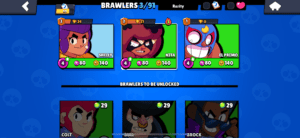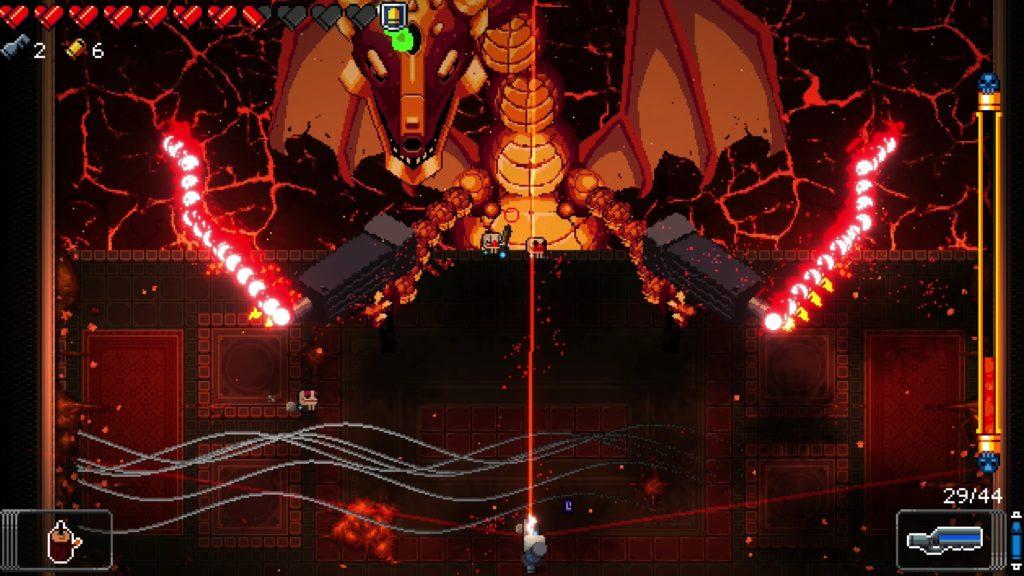The game I decided to play is Brawl Stars. Brawl Stars is a multiplayer battle game developed by Supercell. The game is available on mobile devices, and I chose to play it on my phone, which made the game feel easily accessible and intuitive. The game is designed for players who enjoy team-based combat and strategy. It’s recommended for ages 10+ due to its competitive gameplay, quick reflex requirements, and online multiplayer interactions.
I’ve played a lot of Supercell games before, like Clash Royale and Squad Busters. Every time, I got super addicted and would fixate on them, playing for hours on end every day for months. So when I went into Brawl Stars, I had extremely high expectations. I thought that I would get obsessed and end up completely addicted once I started playing.
However, when I first started playing the game, I honestly didn’t like it that much. Brawl Stars felt super similar to Squad Busters (my pride and joy). They had the same characters and the same fast-paced battle matches. However, the actual gameplay was really different. In Squad Busters, you focus on collecting coins/gems and growing your squad without actively doing the attacking yourself. In contrast, in Brawl Stars, the goal is to outlast other players in a fast-paced battle by strategically and actively attacking, dodging, and collecting power-ups to boost your health and strength. That shift threw me off at first, so I didn’t love the game right away. It took me a while to adjust, but once I got over the learning curve, I actually started to enjoy it a lot and played it way longer than I should have. I was drawn to the intensity of the matches and the satisfaction of slowly improving my aim, timing, and uprgrading my characters. The more I played, the more I got pulled into the rhythm of it.
Thus, Brawl Stars puts players at risk for addiction by combining fast-paced gameplay with unpredictable outcomes, creating a loop that keeps players coming back for more. The use of randomness added with the constantly rotating game modes and wide cast of characters makes every round feel different. This variety feeds into the illusion that the next match might be the one where players come on top, encouraging them to keep playing “just one more round.”
Brawl Stars uses randomness—such as power-up spawns, loot boxes, and in-game outcomes—to create an illusion of control, making players believe that success is always just one game away. Each match throws players into a new set of conditions. There are different maps, random power-up cube placements, and unpredictable enemy behavior, which forces players to constantly adapt. For example, in a solo showdown match I played, I started next to three power-up boxes and felt like I had a strong advantage. But within seconds, I was ambushed and defeated by a player who had a higher level character than me. I had no way of anticipating that, and it completely shifted the outcome of the match. I thought it was unfair and that I could anticipate this type of behavior in the next round, so I played another round (and continued playing more rounds). That kind of randomness isn’t just surface-level, it actively shapes the way players strategize and respond in real time. This randomness functions as a key formal element of the game, structuring the rules, space, and outcomes in a way that keeps each round unpredictable. Moreover, the game’s mechanisms, including power-up collection, limited health, timed events, and shooting controls, reinforce that unpredictability by making every decision feel high-stakes. Together, these components make it difficult for players to develop a stable strategy, keeping them in a constant loop of trial, error, and anticipation. Through this, Brawl Stars keeps players chasing that “perfect round,” making it incredibly easy to lose track of time and fall into repetitive play. Additionally, after a certain amount of wins, Brawl Stars will give players loot boxes that mimicks slot-machine mechanics: flashy animations, the thrill of randomness, and the constant feeling that a rare character might be in the next box. The game creates the illusion that the next box will give you something big, but more often than not, you just end up with coins or low-tier items. This mismatch between anticipation and outcome reinforces the addictive loop, encouraging players to keep playing (or paying) for another chance at something better.
Pictured: Final battle between me and the last player

Furthermore, by offering a rotating variety of game modes and characters, Brawl Stars constantly refreshes the gameplay experience, making the game feel endlessly replayable and reducing the chance of player fatigue. As I kept playing, I started unlocking new worlds and timed events, each with its own set of rules and objectives. One of my favorite discoveries was a special event mode called “Brawl Balls” that felt like a soccer match. In this game mode, you were teamed up with other players and had to shoot opponents while also trying to get the ball into the goal (Picture 1). What made this mode especially exciting was how unpredictable it felt. Each team had a different strategy, and you never knew whether they’d run to the goal, play defense, or completely ambush you. There was always a rush when I had the ball and tried sprinting across the map to make a goal, all while hoping my teammates had my back so that I wouldn’t be killed before scoring. Thus, when I got bored of the standard battle modes, I’d always switch to this one because it felt more cooperative and goal-oriented. The variety of game modes creates an aesthetic of sensation, with fast-paced action, exciting event modes, and an adrenaline-inducing pace that keep players hooked. This is essentially what draws players into the game because of its thrilling dynamics. On top of this, Brawl Stars features a huge roster of characters (or “brawlers”) that range in rarity from common to legendary. Each has unique powers and playstyles (Picture 2), which makes collecting them feel like a core part of the game. The fact that some brawlers are harder to unlock creates a kind of collector’s drive and adds another layer of addiction. This is because players keep playing more rounds or spending money in hopes of getting more characters and upgrading them to their max levels. Ultimately, the constant variation in gameplay and character options fuels long-term player engagement, making it easy to fall into an addictive cycle.
Picture 1: Brawl Balls

Picture 2: Different characters, tiers, and levels

Compared to other games that rely on chance, Brawl Stars stands out by embedding randomness directly into both direct gameplay and long-term progression. In games like Clash Royale, chance is heavily concentrated in the reward systems, where players rely on luck to unlock powerful items or characters. While Brawl Stars also uses loot boxes and rarity tiers, what makes it different is how randomness shapes the actual gameplay. During matches, unpredictable factors like enemy movement, power-up locations, and team strategies create constant variation, meaning no two rounds ever feel the same. This makes the randomness feel more integrated into the game’s design rather than just its monetization.
Moreover, from an ethical standpoint, I appreciate that Brawl Stars allows players to fully engage with the game without being forced to pay upfront. Unlike some games, the core gameplay remains accessible. Players can still win matches, unlock brawlers, and participate in special events without spending money. However, the game still raises concerns around addiction and monetization. The inclusion of loot boxes, flashy reward animations, and rarity tiers creates a subtle pressure to keep playing (or even paying) in hopes of unlocking more powerful characters. This system taps into psychological patterns of reward-seeking behavior, particularly with younger players, and blurs the line between choice and compulsion. While spending isn’t required, the structure of the game makes it feel like progress is slower and less exciting without it. As someone who got pulled into the loop of playing round after round for rare brawlers and jumping into the “just one more match” mindset, it’s clear how the game’s design nudges players toward extended play sessions and monetary transactions. Ethically, this raises questions about how much control players really have, and whether the game’s systems are engineered to be optional or irresistible.



